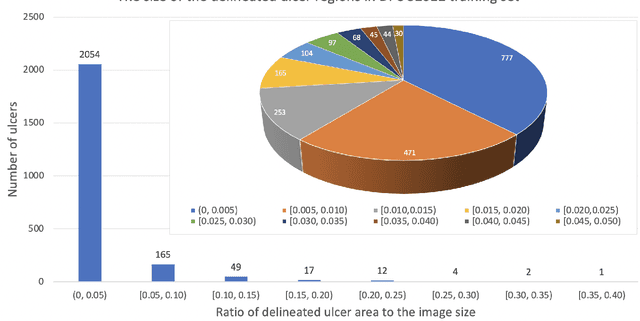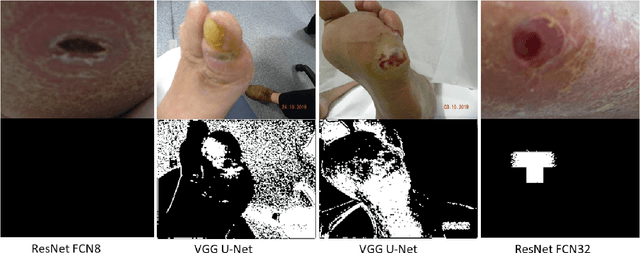Elias Chacko
An Enhanced Harmonic Densely Connected Hybrid Transformer Network Architecture for Chronic Wound Segmentation Utilising Multi-Colour Space Tensor Merging
Oct 04, 2024



Abstract:Chronic wounds and associated complications present ever growing burdens for clinics and hospitals world wide. Venous, arterial, diabetic, and pressure wounds are becoming increasingly common globally. These conditions can result in highly debilitating repercussions for those affected, with limb amputations and increased mortality risk resulting from infection becoming more common. New methods to assist clinicians in chronic wound care are therefore vital to maintain high quality care standards. This paper presents an improved HarDNet segmentation architecture which integrates a contrast-eliminating component in the initial layers of the network to enhance feature learning. We also utilise a multi-colour space tensor merging process and adjust the harmonic shape of the convolution blocks to facilitate these additional features. We train our proposed model using wound images from light-skinned patients and test the model on two test sets (one set with ground truth, and one without) comprising only darker-skinned cases. Subjective ratings are obtained from clinical wound experts with intraclass correlation coefficient used to determine inter-rater reliability. For the dark-skin tone test set with ground truth, we demonstrate improvements in terms of Dice similarity coefficient (+0.1221) and intersection over union (+0.1274). Qualitative analysis showed high expert ratings, with improvements of >3% demonstrated when comparing the baseline model with the proposed model. This paper presents the first study to focus on darker-skin tones for chronic wound segmentation using models trained only on wound images exhibiting lighter skin. Diabetes is highly prevalent in countries where patients have darker skin tones, highlighting the need for a greater focus on such cases. Additionally, we conduct the largest qualitative study to date for chronic wound segmentation.
Translating Clinical Delineation of Diabetic Foot Ulcers into Machine Interpretable Segmentation
Apr 22, 2022



Abstract:Diabetic foot ulcer is a severe condition that requires close monitoring and management. For training machine learning methods to auto-delineate the ulcer, clinical staff must provide ground truth annotations. In this paper, we propose a new diabetic foot ulcers dataset, namely DFUC2022, the largest segmentation dataset where ulcer regions were manually delineated by clinicians. We assess whether the clinical delineations are machine interpretable by deep learning networks or if image processing refined contour should be used. By providing benchmark results using a selection of popular deep learning algorithms, we draw new insights into the limitations of DFU wound delineation and report on the associated issues. This paper provides some observations on baseline models to facilitate DFUC2022 Challenge in conjunction with MICCAI 2022. The leaderboard will be ranked by Dice score, where the best FCN-based method is 0.5708 and DeepLabv3+ achieved the best score of 0.6277. This paper demonstrates that image processing using refined contour as ground truth can provide better agreement with machine predicted results. DFUC2022 will be released on the 27th April 2022.
 Add to Chrome
Add to Chrome Add to Firefox
Add to Firefox Add to Edge
Add to Edge